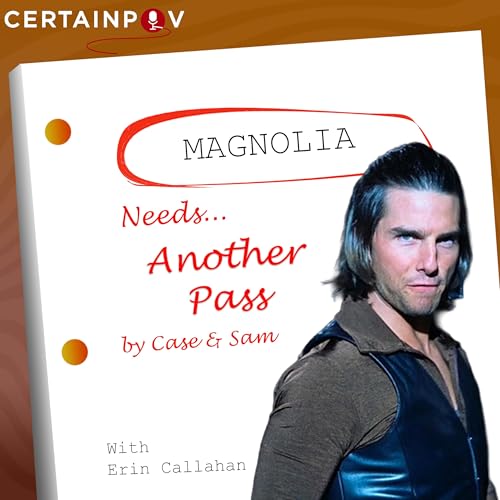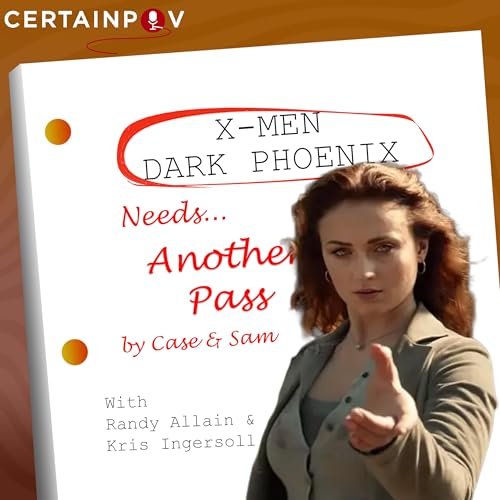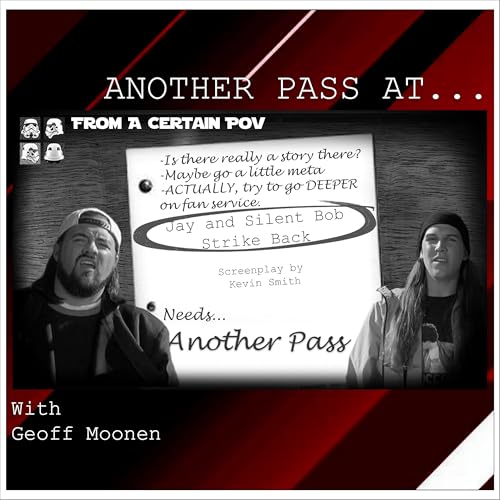This week on Another Pass, Case and Sam are joined by guest Sean Muir to dissect the late '90s sci-fi horror flick Virus—a movie where bad wiring meets worse decisions. Together, they explore the film's potential, its squandered setup, and how it almost became the Event Horizon of killer robot movies. #AnotherPass #Virus1999 #JamieLeeCurtis #DonaldSutherland #SeanMuir #SciFiHorror #FlawedButFascinating Another Pass Full Episode Originally aired: August 22, 2025 Music by Vin Macri and Matt Brogan Podcast Edited by Sophia Ricciardi Certain Point Of View is a podcast network brining you all sorts of nerdy goodness! From Star Wars role playing, to Disney day dreaming, to video game love, we've got the show for you! Learn more on our website: https://www.certainpov.com Join us on Discord: https://discord.gg/wcHHer4 PODCAST SHOWS: ▶ Another Pass - https://www.certainpov.com/another-pass-podcast FOLLOW US: ▶ Website: https://www.certainpov.com Overview Guests Case Aiken and Sam Alicea introduced Sean Muir from Movie Midness to discuss the 1999 film 'Virus', highlighting its unexpected obscurity despite notable cast members like Jamie Lee Curtis and Donald Sutherland. The film was released in January 1999, originally scheduled for late 1998, but was a commercial failure, earning only half of its budget back with critical reviews reflecting its shortcomings. Discussion revealed that the movie heavily referenced better films like The Thing and Alien, being described as merely an 'outline of a movie', lacking the depth expected from the genre. The technical achievements of Phil Tippett's animatronics were praised, although criticized for being too bright for the intended horror atmosphere, while CGI elements did not hold up well. Cultural shifts post-9/11 were noted as a change in audience appetite for sci-fi horror, marking an end to the late 90s creature feature trend seen in films like Independence Day. Character development was weak, with the consensus that Billy Baldwin's role could be eliminated without impacting the story; Sherman Augustus's character identified as the most promising but underutilized. Proposed a campier direction for the film, featuring humans viewed as 'uncouth' by aliens, which could yield more engaging content and interactions among the crew. Suggested removing the opening space scene to enhance suspense, providing a fresher take on alien threat revelation and deepening story engagement. Critique noted inconsistencies in character portrayals Notes ️ Episode Introduction & Setup (00:00 - 10:25) Case Aiken and Sam Alicea welcome guest Sean Muir (Movie Midness) to discuss the 1999 sci-fi horror film 'Virus'. Both Case and Sam were unfamiliar with the film despite it featuring notable actors and being from 1999, highlighting how obscure it became. John Bruno left his VFX supervisor position on Titanic to direct this film, but his career trajectory after this movie remains unclear. The movie appears made for cyberpunk enthusiasts, sci-fi nerds, and specifically mentioned Billy Idol during his cyberpunk phase after missing the T-1000 role in Terminator 2. Movie Plot Summary & Analysis (07:40 - 20:48) Film opens with Russian space station receiving alien energy that transfers to communication ship; American tugboat crew discovers abandoned vessel during hurricane and faces killer machines. Features Jamie Lee Curtis, Donald Sutherland, Billy Baldwin, and Cliff Curtis; Sam expresses confusion about Billy Baldwin's casting choices. Film draws heavily from better movies including The Thing, Alien, Event Horizon, and Ghost Ship; described as feeling like an 'outline of a movie'. Movie was a commercial bomb, earning only half its budget back and receiving harsh critical reviews. ️ Technical & Production Discussion (20:49 - 40:48) Phil Tippett's animatronics work praised as excellent, though perhaps too well-lit for horror atmosphere; practical effects hold up better than CGI elements. Late 90s represented end of creature feature era; audiences moving toward CGI spectacle seen in films like Independence Day and Jurassic Park sequels. Discussion of how cultural tastes changed dramatically after 9/11, affecting appetite for this type of sci-fi horror content. Movie reused ship from The Abyss and other James Cameron productions; originally scheduled for 1998 release but moved to January 1999 'dump month'. Character & Story Analysis (40:48 - 01:02:22) Crew relationships underdeveloped compared to superior ensemble films like Aliens; characters lack memorable personality moments. Consensus that Billy Baldwin's character adds nothing to the film and could be completely removed without impact. Sherman Augustus's character Richie identified as film's best, showing intelligence and survival instincts that should have made him the protagonist. Central concept of humans being the 'virus' poorly executed compared to The Matrix (same...
続きを読む
一部表示
 2025/12/121 時間 20 分
2025/12/121 時間 20 分 2025/11/141 時間 54 分
2025/11/141 時間 54 分 2025/10/172 時間 6 分
2025/10/172 時間 6 分 2025/09/221 時間 10 分
2025/09/221 時間 10 分 2025/08/221 時間 28 分
2025/08/221 時間 28 分 2025/07/252 時間 25 分
2025/07/252 時間 25 分 2025/06/272 時間 6 分
2025/06/272 時間 6 分 1 時間 24 分
1 時間 24 分
